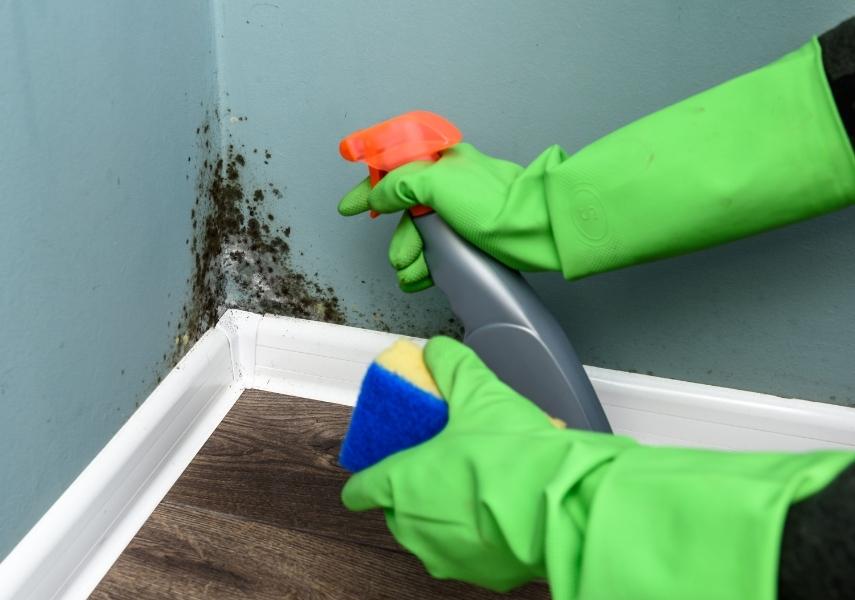What Is Black Mould, And How Can You Prevent It?

Damp in South Africa is usually one of three kinds: penetrating damp (caused by cracks and leaks), rising damp (caused by groundwater) and condensation (from showering). Excess damp can lead to the growth of mould spores and ultimately lead to black mould. Signs of mould in your home include a damp smell, visible ‘furry’ textures that are black in colour, condensation droplets on your windows, or specific health symptoms including watery and itchy eyes.
If you suspect you have black mould, you should not think of cleaning up yourself. This is because black mould is extremely toxic and can be easily spread. Moreover, black mould can grow in porous materials like wood and drywall, so it cannot simply be wiped off. Often, affected materials have to be discarded since there is no way they can be restored.
What Health Issues Does Black Mould Cause?
Black mould is particularly dangerous when compared to other types of mould because it releases mycotoxins. These are linked to a plethora of health problems, including memory loss, mood swings, aches and pains, allergies and irritations, and infections. Some allergic conditions caused by black mould are more severe - including mould-induced asthma, allergic fungal sinusitis, and hypersensitivity pneumonitis. In some cases, mycotoxins can cause vomiting, diarrhoea and respiratory difficulties. One University of Cincinnati study showed that infants who live in mouldy homes are three times more likely to develop asthma by the age of seven. Signs to watch out for include wheezing, coughing and frequent colds that travel to the chest.
What Causes Black Mould To Grow?
Black mould is often accompanied by other types of mould. This is why if you notice any type of mould (including green, non-toxic mould) you should take action to improve your air quality immediately. This is because mould can grow rapidly, taking over in just a week. The causes of mould can also be poor ventilation, plumbing problems, roof and window leaks, problems in your HVAC system, cracks in your foundation, and frequent flooding. Professional testing and consultation is recommended because this will tell you the exact cause of the problem. Sometimes, black mould can be prevented from regrowth by simply fixing a leaky pipe. At other times, bigger action needs to be taken. For instance, black mould thrives in the dark, so you may decide it is worth it to extend a window or knock down a wall so sunlight can get into previously hidden areas.
Professional Mould Testing And Cleaning
As mentioned above, mould should be professionally tested because not all mould that is black in colour belongs to the dangerous stachybotrys species. Experts will test the mould they find and also conduct moisture level tests. The professionals will need to be very thorough, since leaving infected materials will result in regrowth. Mould does not only grow in typical places like tiles, bathrooms and basements. Sometimes it also grows into soft furnishings, and mould and spores can penetrate fabric to such an extent that items have to be thrown away.
Many homes have a damp problem, but that does not mean they all have mould. Black mould is dark and easy to see, but other moulds have a similar appearance, so you may not know the extent of the problem in your home without professional evaluation. Surfaces and furniture items you love may have to be destroyed, but considering the major health effects that mould can have, a new set of furniture will definitely be a good investment.
